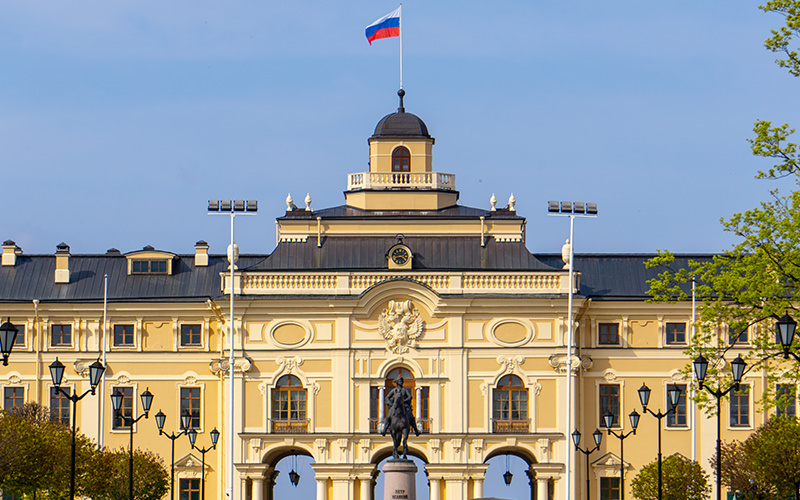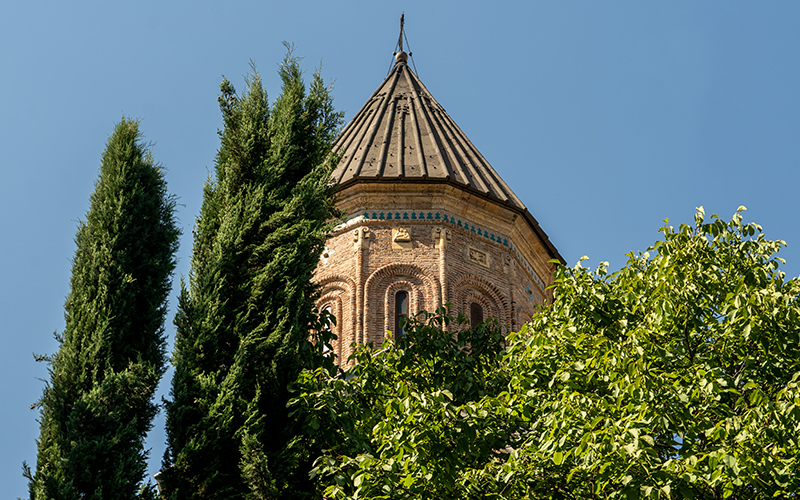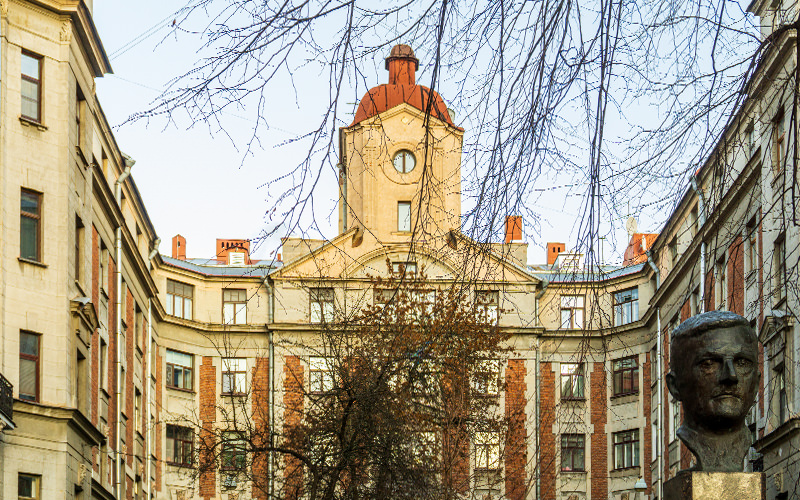While strolling through the streets of Seoul, I often noticed some unusual structures amidst the city’s modern skyscrapers—large gates and sections of tall stone walls. Curious, I looked them up online and discovered that these structures were part of the defensive system of the ancient city. In the past, Seoul’s fortress wall included eight gates, but only six remain today. While I didn’t set out to visit all the gates, I’d like to share my impressions of some of these historic landmarks.
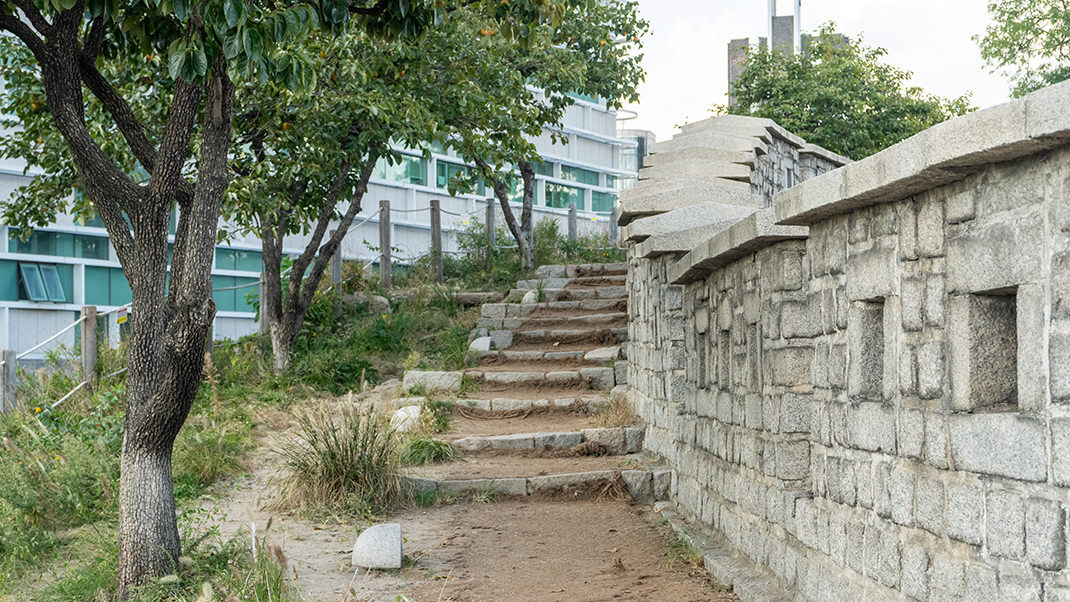
Seoul Fortress Wall
The extensive fortress wall was built to protect and define the boundaries of Hanyang, the historical name for Seoul. This city served as the capital of the Joseon dynasty. Construction of the defensive structure began in 1396. The wall served its purpose for 514 years, setting a record for the longest operational urban defense wall in the world.
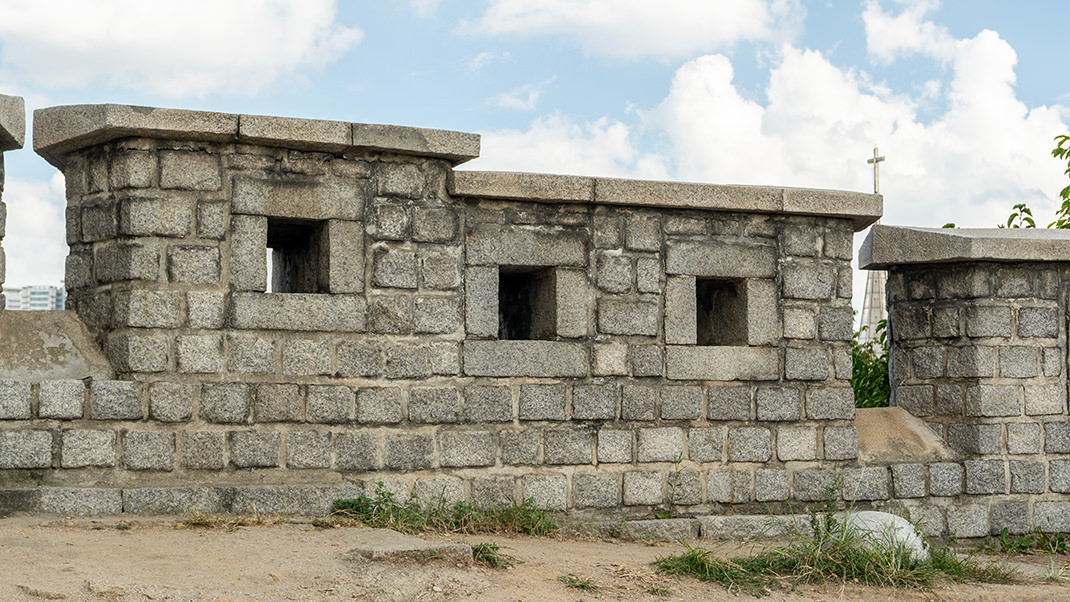
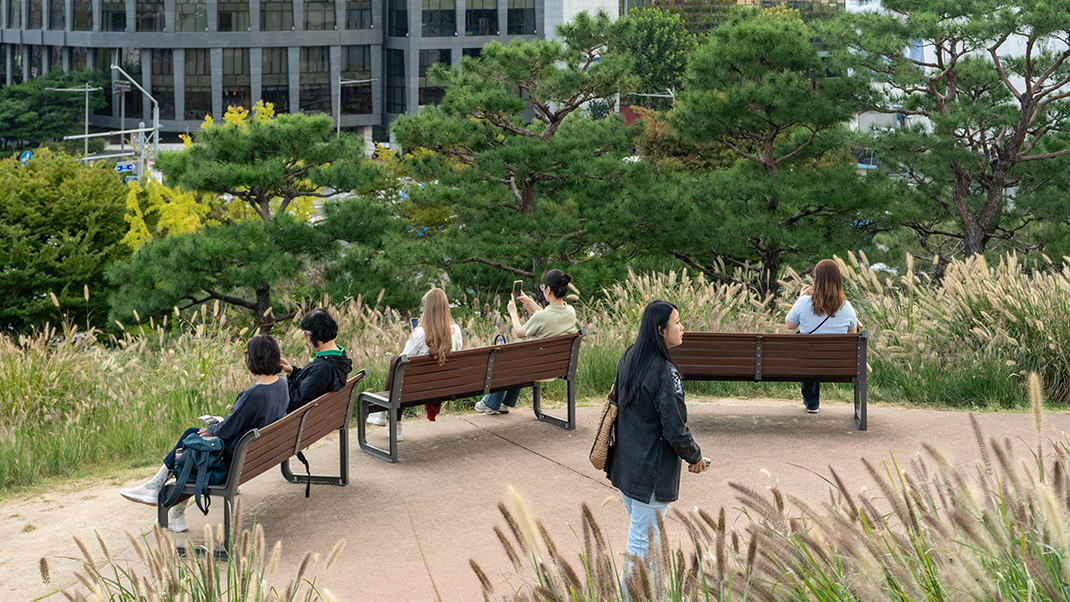
The fortress wall, known as Hanyangdoseong, stretches about 18.6 kilometers, with sections reaching up to eight meters in height. Interestingly, the stonework of the wall is not uniform, as different types of stones were used during various construction phases. The building of the wall is divided into three distinct periods.
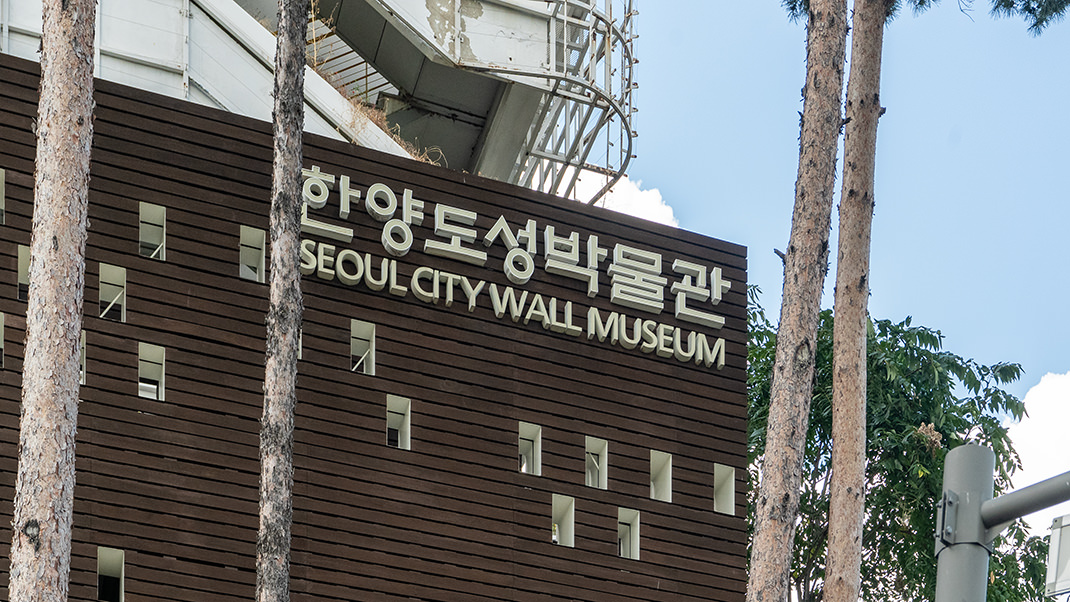
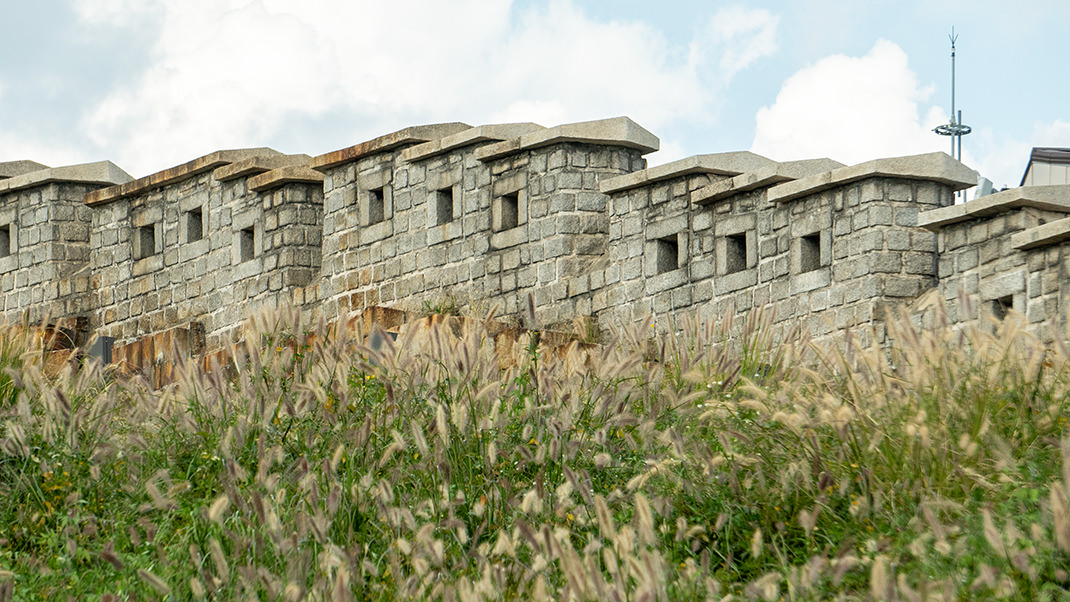
As mentioned earlier, the wall originally featured eight gates, four of which were classified as Great Gates, while the remaining four were secondary gates. These structures were built between 1396 and 1398. Today, the Hanyangdoseong Fortress Wall Museum offers visitors insights into the history of this monumental structure.
Sungnyemun Gate
The first gate I encountered in Seoul was Sungnyemun, which I came across on my way from Deoksugung Palace to the Seoullo 7017 elevated walkway. Sungnyemun is considered the largest gate in South Korea. It also boasts another record: the two-story wooden pavilion above the archway is the oldest structure of the Seoul fortress wall. However, the pavilion we see today is a restored version, as much of the historic pavilion was destroyed in a 2008 fire. During the reconstruction, experts were able to preserve about 34% of the original materials.
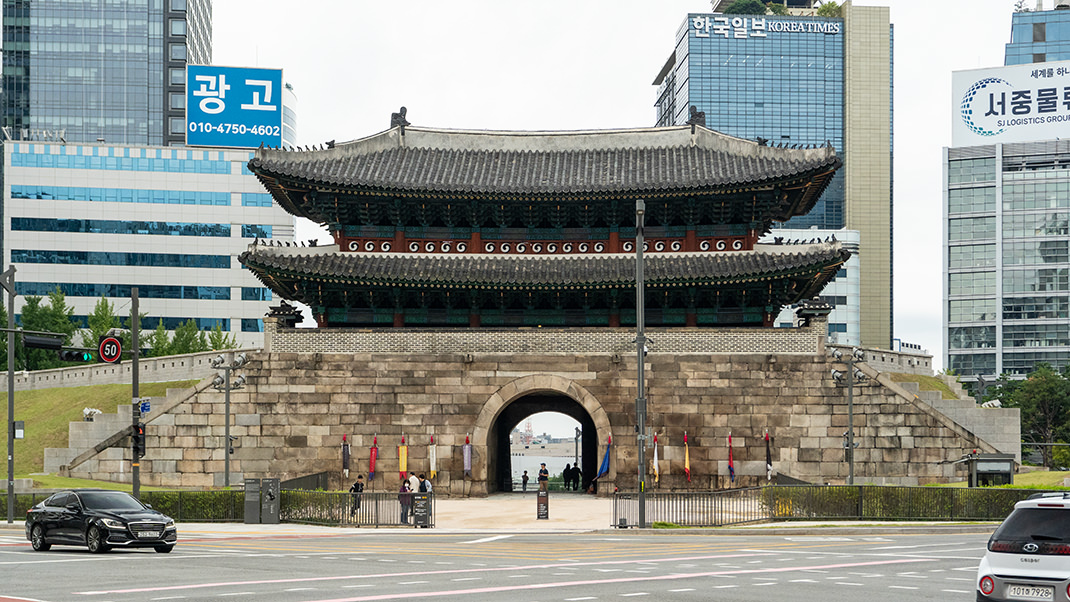
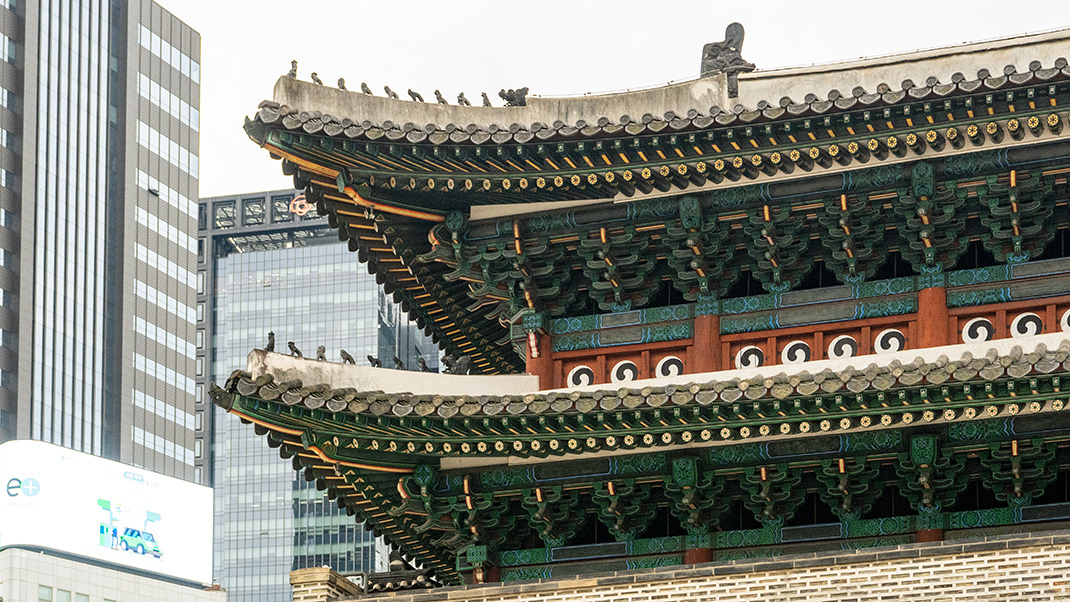
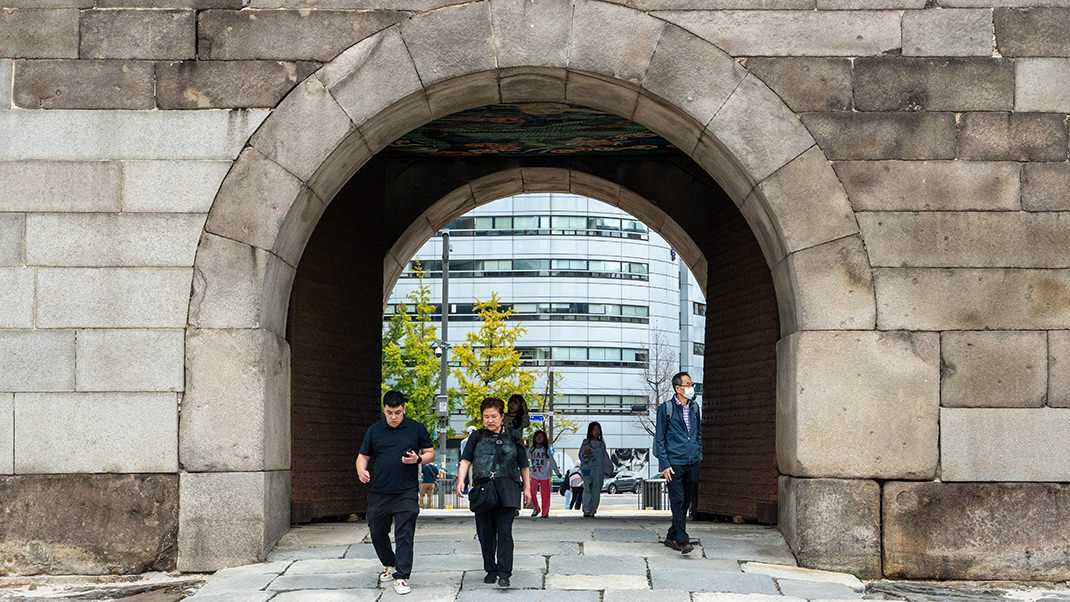
The gate was constructed in the 1390s and has undergone several restorations over time. Sungnyemun is also known as Namdaemun, with “nam” meaning “south.”
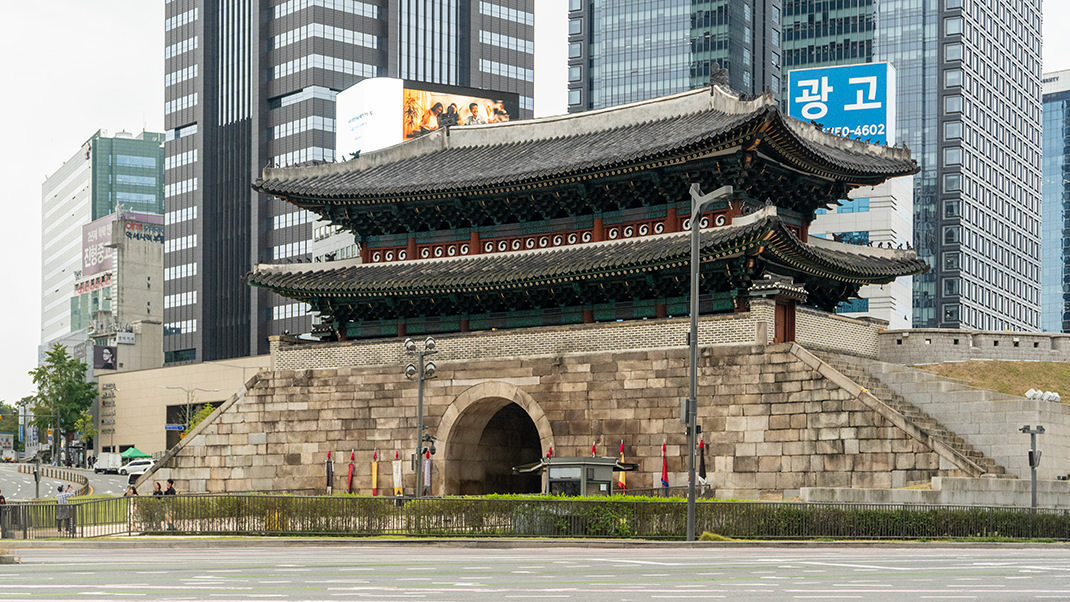
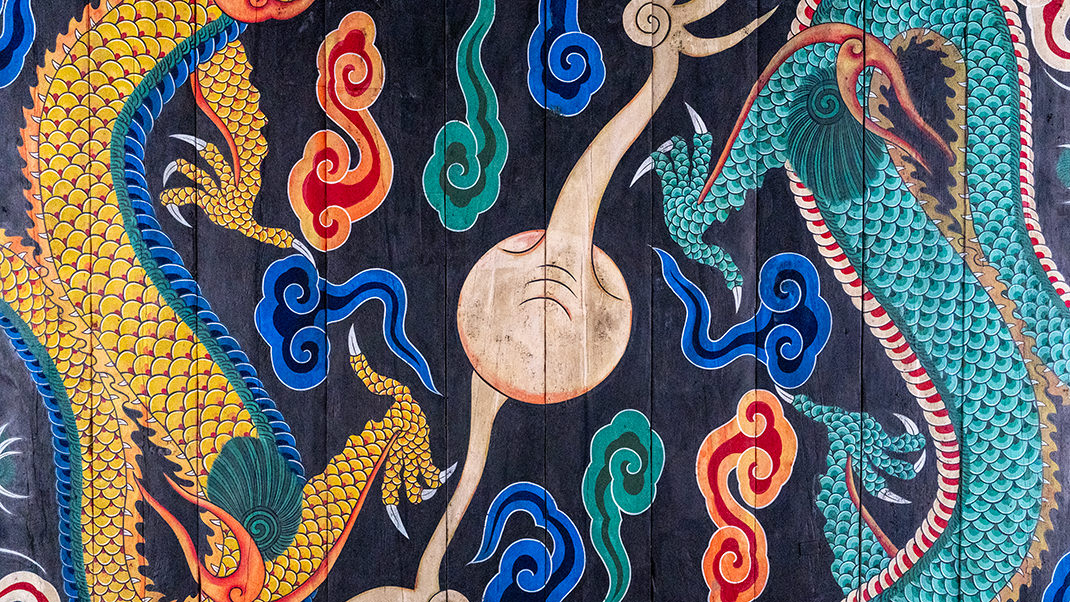
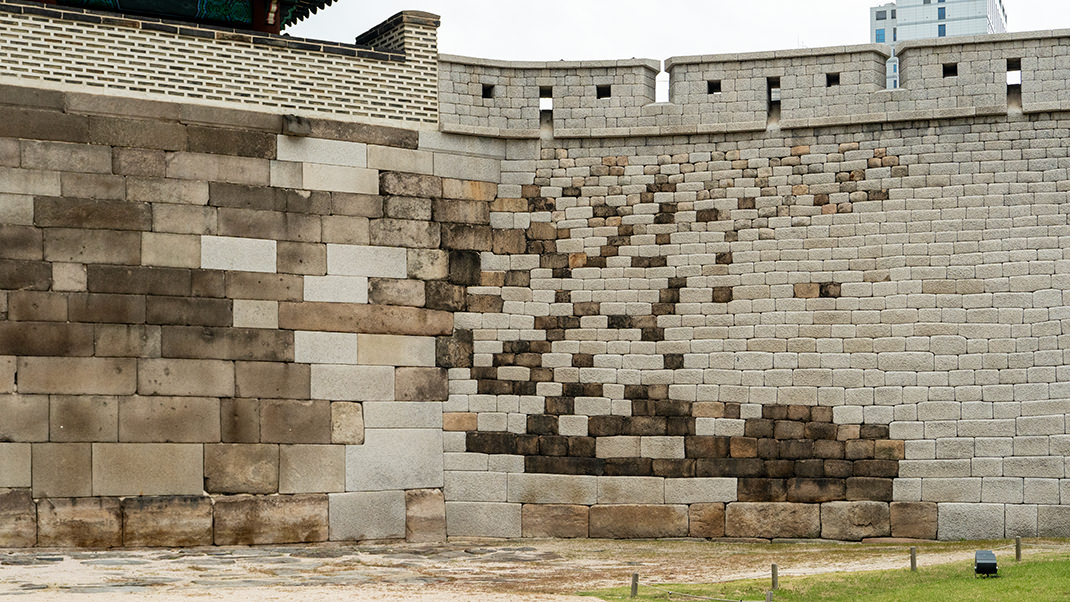
Dongdaemun Gate (Heunginjimun)
Another gate, Heunginjimun, is more commonly known as Dongdaemun. This structure is located in the northeastern part of the city. Like Sungnyemun, this gate was one of the Great Gates of the city.
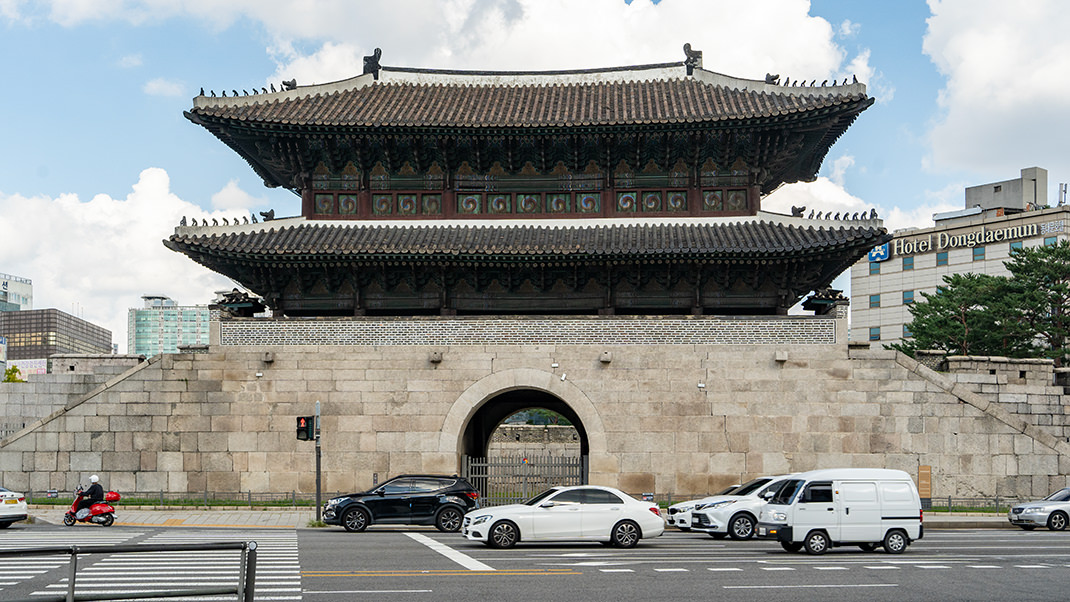
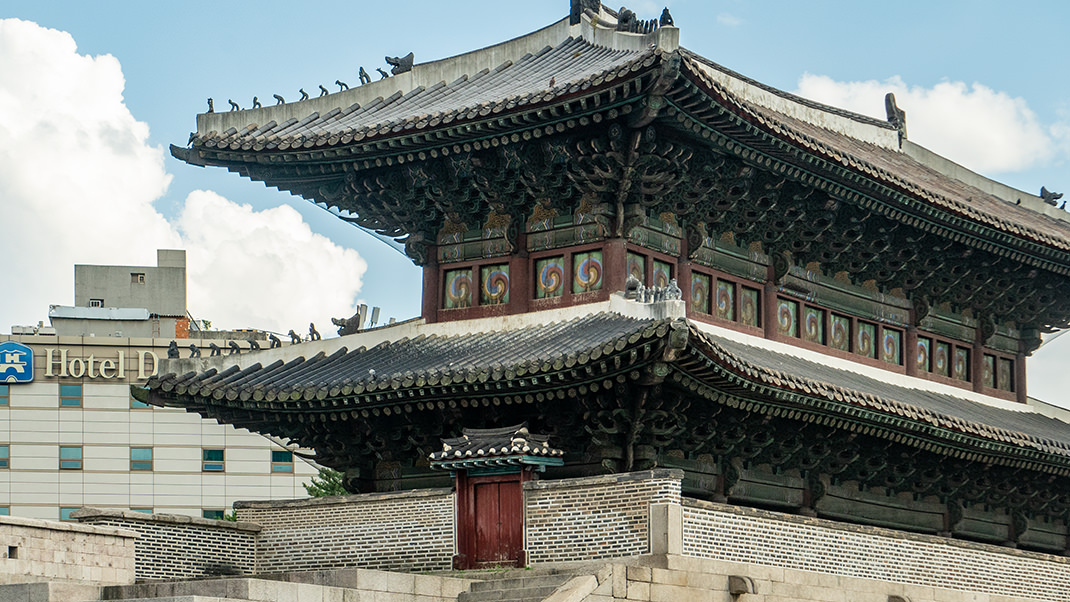
Built in 1396, the gate has been reconstructed multiple times over the centuries. A distinctive feature of this gate is its crescent-shaped outbuilding, designed as an additional defensive structure.
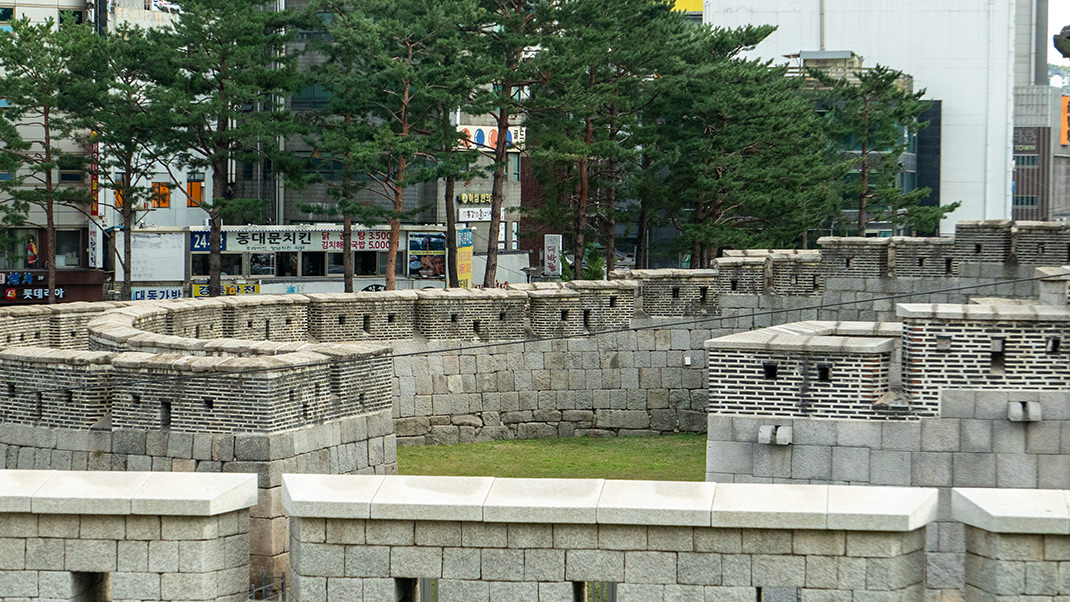
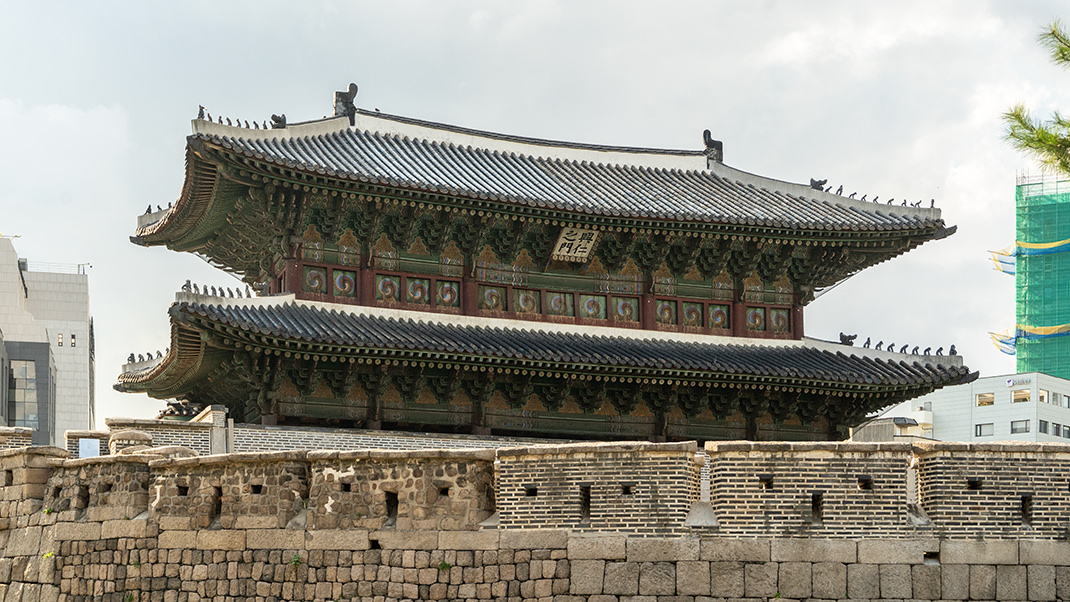
Unlike Sungnyemun, visitors cannot walk under Dongdaemun’s arch. However, there’s a small resting area nearby with benches and photo spots near the remnants of the city wall. This area is also home to the museum I mentioned earlier. On the day I visited, I climbed a significant height along the wall. At the top, I encountered a local resident with a phone mounted on a tripod, aimed at the night sky. According to him, he was waiting for an alien invasion. Who knows? Maybe he’ll see it someday.
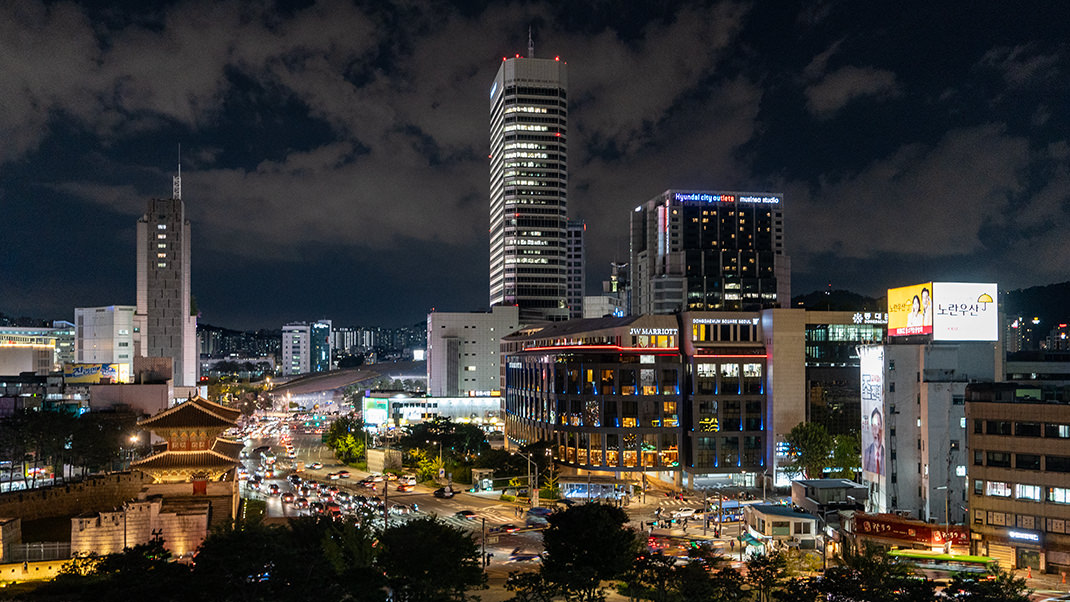
I also came across several more gates during my trip to Bukhansan National Park. I’ll share more about that natural landmark in one of my upcoming articles.
Have a nice trip!


